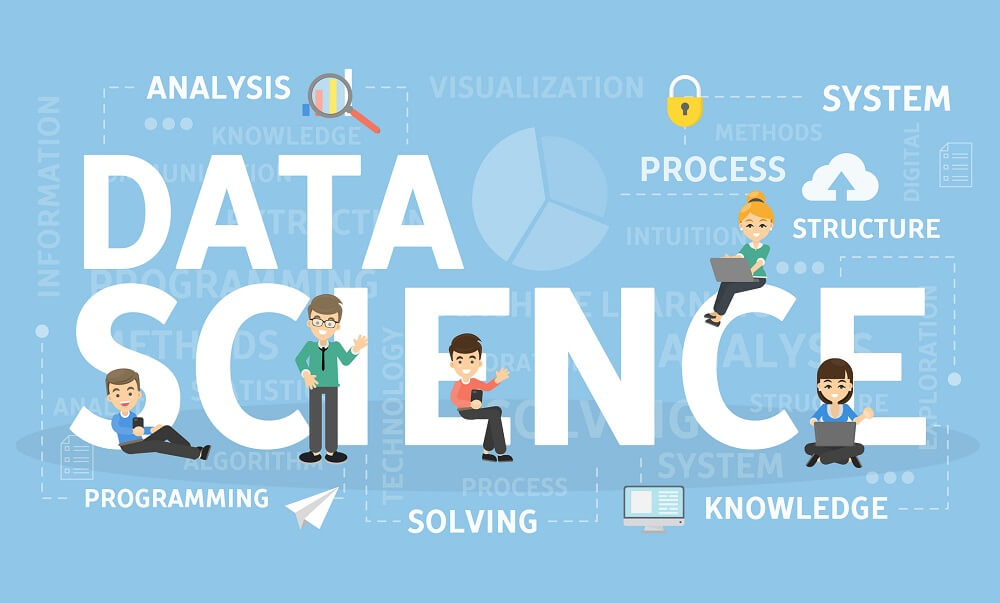The future of the world is Data science, and with the passage of time, it is revolutionizing the way things worked out in the industries. Today it is the most sought after career route.
Data science mainly deals with equipping the young technology enthusiast to sift (scale-invariant feature transform) through a number of scrambled data which are too processed and extract information out of them.
Traditionally the data were mostly structured. But today most of the data are becoming unstructured or semi-structured. As per the rising trend, it is estimated that by 2020, more than 80% of the available data will be unstructured.
A number of sources like financial logs, text files, multimedia forms, and sensors are responsible for this data, and simple BI tools cannot process such huge volume and variety of information. This calls for more complex and advanced analytical tools with algorithms which are capable of processing, analyzing, and drawing useful insights out of it, bringing in the importance of Data Science.
Everything follows the simple basic law of economics, i.e., supply and demand. The demand for data science is very high, but the supply is comparatively low.
Data science is making its mark across different fields, starting from healthcare to politics to disaster management. Top companies like Amazon, Facebook, Google are almost entirely dependent on successful data scientist, investing millions of dollars in ramping up their data science branch.
Research has shown that the median salary of a data scientist is almost around $110,000 and in the coming years, those pursuing Data science will not have to look around for long for better opportunities, looking at the boom in the field and the increasing demand for data analytics.

Python for Data Science
Python is an object-oriented programming language which comes with integrated dynamic semantics basically for web and app development.
Initially started as a way to write scripts which automates the boring stuff, is now one of the topmost leaders in web development, data analysis, and infrastructure development.
In addition to connecting disparate software modules, it is also used to tie multiple systems.
According to a report, Python has achieved substantial popularity and is the fastest growing programming language. In the U.S. and U.K., the Python users traffic has been seen an increase of about 2-3 absolute percentage in 2017.
Python is easy to use compared to other programming language and is very flexible. It can be used both by experts and beginner alike. It is a versatile multipurpose language. It is used for web development, writing scripts, data analysis, machine learning, etc.
The USP of the product is its simple programming structure which comes with an array of advantages. Here you will get access to different packages to play around with data, visualize it, and transform inputs into a numerical matrix. All you do is writing the code, and the rest is done by the program itself.
The big question is, what makes a language popular? The answer could be the language which allows developers to express their thoughts in a simpler way. Python comprises of fewer lines of code compared to other languages, but it is still readable and can be modified effortlessly.
How is Data Science using Python beneficial for professionals?
There has been an increasing demand for more experienced data science professionals in the rapidly growing sector of IT, and Python takes center stage when it comes to usage.
Python is one of the most sought after skill among IT professionals, not only for web development but increasingly for data analysis. Applying dedicated and meaningful time to learn Python can help you become a data scientist. Most of the companies hiring data scientists look for Python coding as a necessary credential. You can take your career to a new level by pursuing a data science with Python course for gaining the relevant skills.
There are almost 72,000 libraries available in the Python Package Index (PyPI) which is growing constantly. Its build with tools for almost every sort of programming. It’s like the “batteries include” philosophy, which allows users to get down to the nuts and bolts of solving problems without having to sift through and choose among the competing function libraries.
Python is free and open source software, which allows anyone to write a library package, thus extending its functionality. Data science has been one of its early beneficiaries of these extensions. Some of the big names are the big daddy and the Pandas.
Some of the common libraries are:
- Scify offers tools and techniques for analyzing scientific data.
- Statsmodels is mainly used for statistical analysis.
- Scikit-Learn and PyBrain give modules to build neural networks and data preprocessing.
- SymPy, used for statistical applications.
- Csvkit, PyTables, SQLite3 used for storage and data formatting.
Although you may come with all the skills needed to become a data scientist straight out of college, still on job training becomes mandatory before starting with your career. The training is based on the company’s specific programs and internal system. It comes with advanced analytics techniques which are not taught in college.
The field of data science is always changing, making it really important to update the skills constantly. One of the common languages used by a data scientist is Python along with Java, Perl, or C/C++. It takes various formats of data and easily imports SQL tables into your codes. It helps to create datasets, and you can get any dataset you need on Google.
Conclusion
Python is a tailor-made part of a Data science professional’s toolbox, helping to carry out the repetitive task and data manipulation, and anyone who has worked with data knows how often repetition occurs. By having a tool which can take care of the grunt work, the professionals get to experience the exciting and rewarding parts of the job.
The post How Python Can Help Data Science Professionals appeared first on The Crazy Programmer.
No comments:
Post a Comment